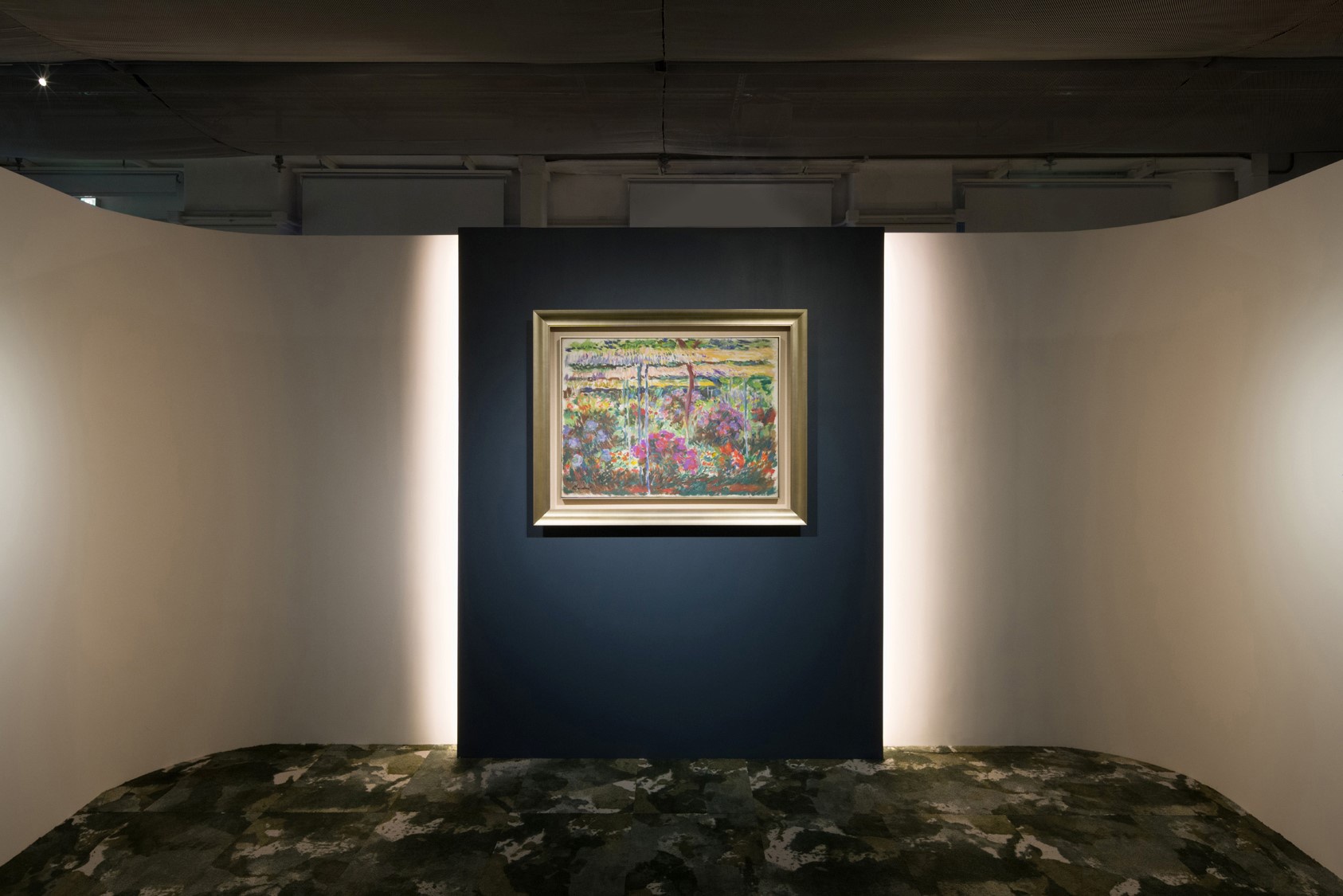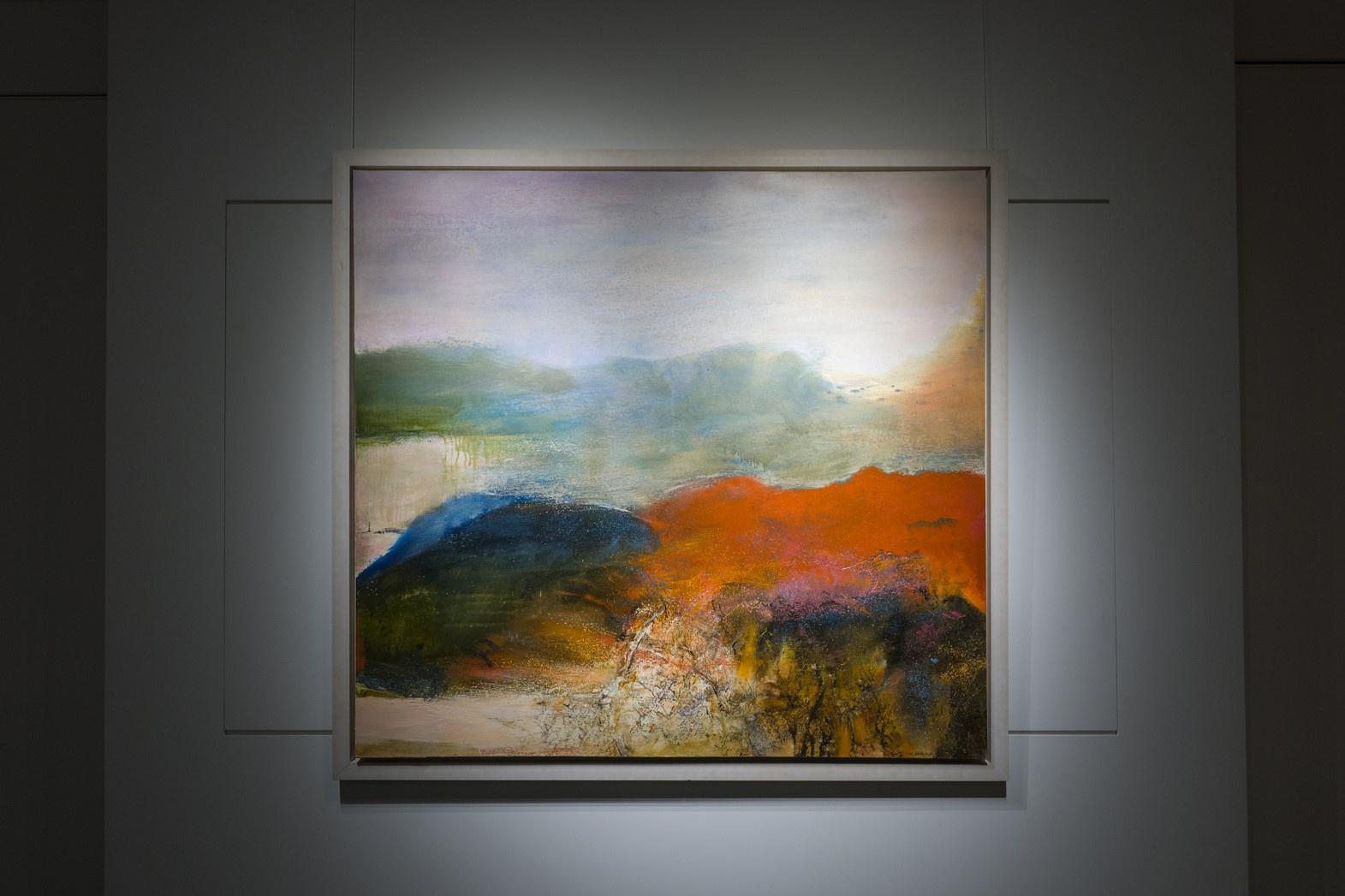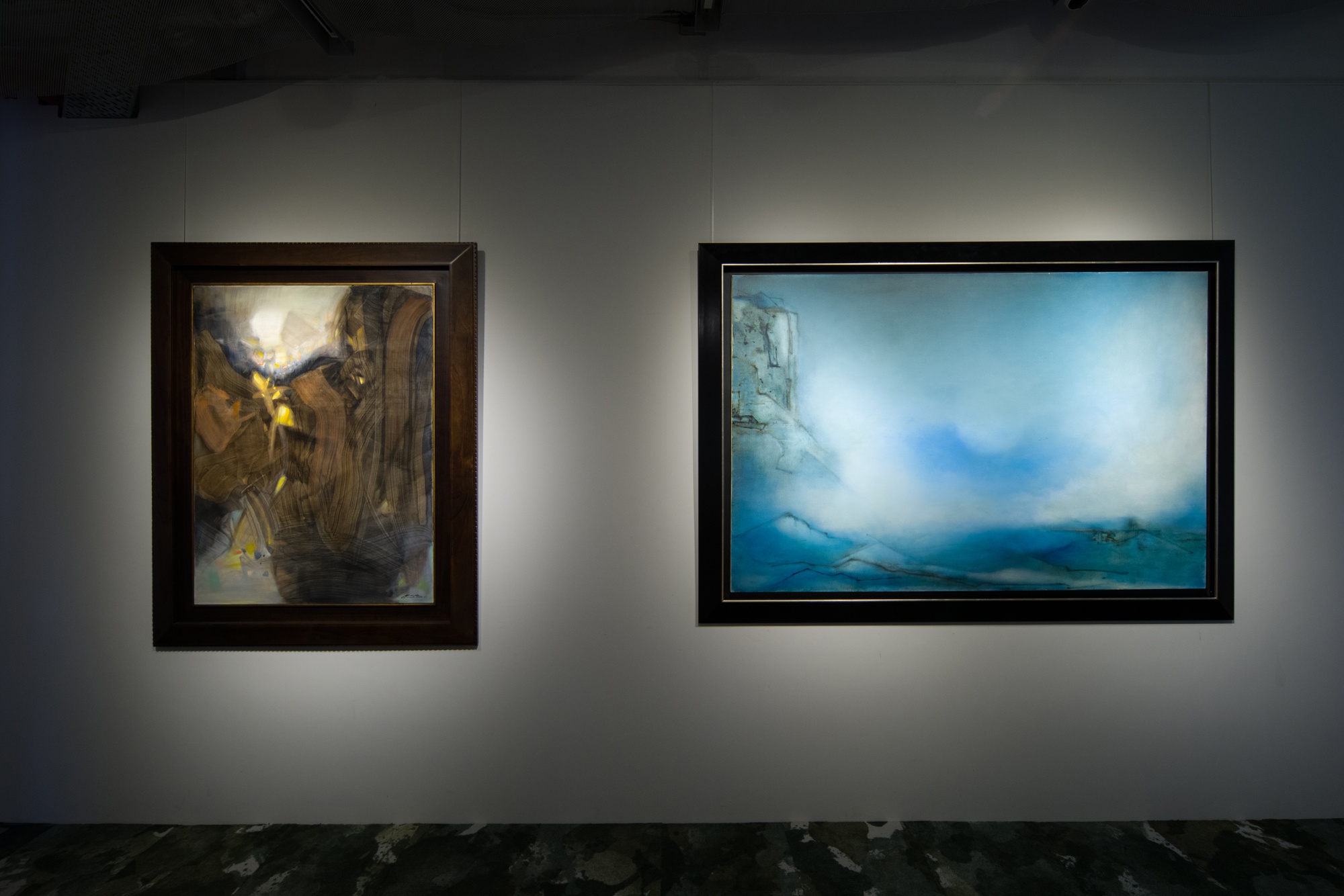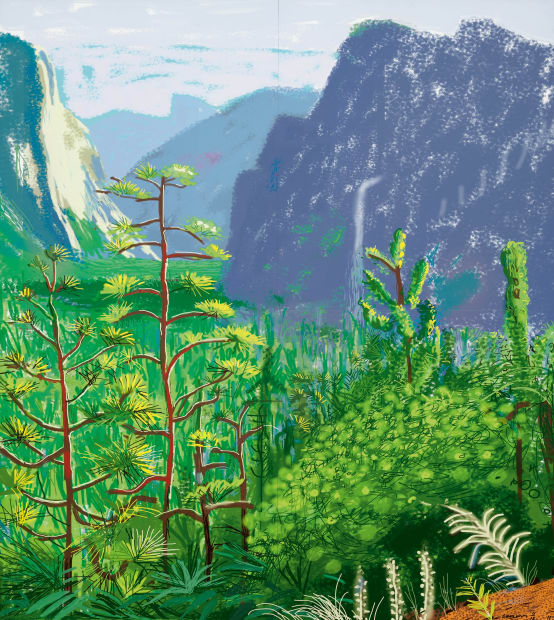-
-
Worlds Beyond Reality – Monet's Legacy
Claude Monet and the Impressionists opened a new chapter in art history, leading the way for the continuous expansion of imagination by landscapes artists in the following 150 years and beyond in their attempts to portray transcendental worlds beyond reality.Kwai Fung Hin is very proud to present in this exhibition a masterpiece of Monet created during his early years at Giverny – Pivoines (1887), alongside a selection of outstanding works of modernist Zao Wou-Ki, Chu Teh-Chun and Lalan, and contemporary artists David Hockney, Shara Hughes, Myonghi Kang and Ziad Dalloul, offering a rare opportunity of comparative study of them, unveiling an interesting, though not the only, cross-section of Monet's legacy.We invite you to join us on this journey of exploration from Monet to the present day, which embraces the vibrant, elusive worlds of life to be found within these pictorial spaces, dissolving the barriers between past and present, East and West, and our outer and inner worlds. -
'I work constantly and lovingly on my garden. What I need most are flowers, always, always. My heart is always in Giverny.'
— Claude Monet
-
At the heart of this exhibition is Claude Monet's Pivoines (‘Peonies’) (1887), one of the earliest works the father of Impressionism painted of his lovingly nurtured garden at Giverny, the subject that would come to define the second half of Monet's career.
Pivoines, one of a tripartite series (its sister paintings are in Tokyo's The National Museum of Western Art and Geneva's Museum of Art and History), showcases the abundant bushes of flowering peonies that were planted under clematis-covered trellises in the Clos Normand of Giverny, which was in the process of being redesigned. The seemingly abstract planar space, with its dazzling myriad of pure colour harmonies,is brought into focus by the three staggered straw roofs, which offered sun protection to the garden's visitors. A keen collector of Japanese woodblock prints, Monet preferred asymmetrical arrangements of forms and flat planes of colour rather than traditional linear perspective, accentuating the vibrance of his works with light-coloured primers (instead of the usual dark grounds used in landscape painting) and undiluted tones and strokes of colour that abandoned conventional three-dimensional modeling. No longer focused on isolated objects or things, or even imitating nature, Monet’s paintings instead drew on dynamic relationships illuminated by light and colour, directing all his efforts towards capturing ‘unknown realities’.

Installation view, Worlds Beyond Reality - Monet's Legacy, Jan 4 - Apr 18 2023 © Kwai Fung Hin Art Gallery 2023
-
Arriving in Paris, at first Zao Wou-Ki rejected traditional Chinese motifs, fearful of being labelled 'a Chinese painter’, before the symbolic rapprochement of his 1950s Oracle Bone series. An all-consuming ‘hunger for creation’ during the frenzied Hurricane Period in the 1960s spoke to Zao's desire ‘to paint the unseen, the breath of life, the wind, movement, the life of forms, the birth of colours and their fusion’. 29.05 – 31.10.68 (1968) is a masterpiece showing full maturity of the artist's pursuit at this stage, which inherited Monet's unique treatment of light and atmosphere, with a strong emphasis on the atmospheric qualities of sky, sea, wind and fire.

Installation view, Worlds Beyond Reality - Monet's Legacy, Jan 4 - Apr 18 2023 © Kwai Fung Hin Art Gallery 2023
01.04.86 (1986) symbolises Zao's transition towards a grand and majestic form of abstraction that synthesised Chinese literati forms of expression, rhythm, light and space, with the power and colour of Western art. The sublime, poetic universes of Zao's monumental canvases in the mid-1980s unveiled fields of pure, unadulterated colour and overlapping, jewel-like tones, with earthy red hues adjacent to verdant green fields and blue-violet skies. Sweeping layers of wash-like colours conveyed a purity and rhythmic fluidity using a unique mixture of Western oils and traditional Chinese ink painting techniques. It was the culmination of years of experimentation and artistic inquiry.

Installation view, Worlds Beyond Reality - Monet's Legacy, Jan 4 - Apr 18 2023 © Kwai Fung Hin Art Gallery 2023
-
-
Executed after decades of honing his expressive powers, L’Éveil (‘the awakening’in French) (1989) captures the iridescent first light of the day piercing through the gloom. Luminous orbs of yellow, orange and green puncture the mist with a dazzling clarity, channelling a sublime, spiritual energy. Although the horizon is obscured, the mirroring of the light in the top and bottom halves conjures up the reflection of the sun rising above a lake or river, with light and colour reflected and refracted upon the watery surface. Dramatic chiaroscuro was a motif Chu Teh-Chun developed throughout the 1970s following his encounter with Rembrandt's strikingly lit oil paintings in the Netherlands.
 Installation view, Worlds Beyond Reality - Monet's Legacy, Jan 4 - Mar 4 2023 © Kwai Fung Hin Art Gallery 2023Like Monet, whose influence had initially drawn her and her first husband to Paris, Lalan was unafraid to spearhead new forms of visual expression that articulated her vision of modern reality. La lune est voilée (1974) provides a window into Lalan's deep re-examination of her Chinese roots and meditation on the essence of Song Dynasty literati paintings, two decades after first arriving in France. Her visual language changed from highly charged monumental abstract compositions to atmospheric landscapes reflective of her liberated inner world.
Installation view, Worlds Beyond Reality - Monet's Legacy, Jan 4 - Mar 4 2023 © Kwai Fung Hin Art Gallery 2023Like Monet, whose influence had initially drawn her and her first husband to Paris, Lalan was unafraid to spearhead new forms of visual expression that articulated her vision of modern reality. La lune est voilée (1974) provides a window into Lalan's deep re-examination of her Chinese roots and meditation on the essence of Song Dynasty literati paintings, two decades after first arriving in France. Her visual language changed from highly charged monumental abstract compositions to atmospheric landscapes reflective of her liberated inner world. -
-

David Hockney, Yosemite I, October 16, 2011, 2011, iPad drawing printed on paper and mounted on Dibond, 197 x 177 cm. Photo courtesy © David Hockney .Inc
-
 Myonghi Kang, La Cour A, 2011, oil on canvas, 260 × 220cm © Myonghi Kang
Myonghi Kang, La Cour A, 2011, oil on canvas, 260 × 220cm © Myonghi Kang -
-

Ziad Dalloul, Meal on Water, 2022, oil on canvas,100 x 100 cm © Ziad Dalloul
Ziad Dalloul was born in Soueïda, a city in southern Syria dotted with woods and vineyards and surrounded by a chain of volcanic mountains. Intimacy with nature was planted in his heart at an early age and thus became a central part of his artistic gaze in the course of his creation, many of his works are a carnal, Baroque hymn to nature.The same instinctive understanding and mastery of the emotional potential of light and colour can be observed in Dalloul's and Monet's works. In particular, the intense, darker tonalities of Meal on Water (2022) and Water Field (2022) recall the melancholic, moving beauty of Monet's Weeping Willow works, which he painted as the World War One battlefront neared Giverny. -
Looking back, perhaps what make Monet a legend are his discoveries of the relationship between time and space, light and color, as well as the secrets of their interaction, the resulting shift in painting focus that had brought unprecedented visual, and even more importantly, demonstrating the limitlessness of possibilities in representation of the facade of our world, which do and will continue to inspire artists today and tomorrow.
-
WORLDS BEYOND REALITY - MONET'S LEGACY
Past viewing_room

